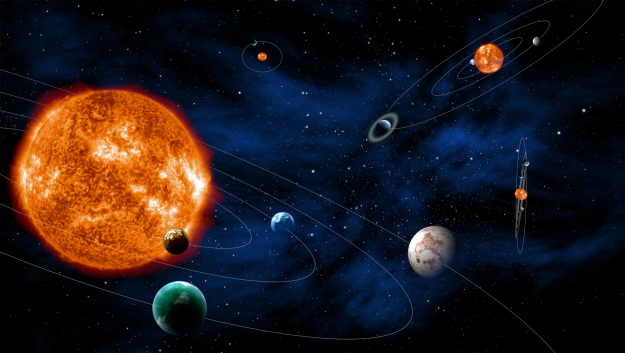
A decade from now, a new space observatory will begin its reach for the stars in search of new worlds. The European Space Agency’s (ESA) Science Programme Committee announced on Wednesday, February 19, that it has selected the PLAnetary Transits and Oscillations of Stars (PLATO) mission for a prospective 2024 launch utilizing a Soyuz-Fregat launch vehicle. Coming hot off the heels of discoveries made by other observatories, including NASA’s Kepler and CoRot (the Convection, Rotation, and Planetary Transits mission, led by France’s CNES with contributions from the ESA), this spacecraft is intended to build significantly on our knowledge of the universe, the Solar System, and the formation of life in general.
In a previous AmericaSpace article, it was explained how PLATO will hunt for new stars and worlds. Similar to Kepler and CoRot, the observatory will “hunt” for drops in brightness that would signal a planet’s transit in front of a star. The spacecraft will be outfitted with 34 separate telescopes and cameras, which will observe up to a million stars. According to the mission’s proposal cited in the previous AmericaSpace article, “[PLATO] will therefore provide the first large-scale catalogue of bulk characterized planets with accurate radii, masses, mean densities and ages. This catalogue will include Earth-like planets at intermediate orbital distances, where surface temperatures are moderate.”
It is hoped PLATO will go on to identify scores – perhaps thousands – of exoplanets and associated systems. The mission is meant to address issues involving the formation of planets. It is also hoped Earth-like planets will be identified, perhaps uncovering how life is synthesized, and the Solar System’s place in the universe at large. Alvaro Giménez, ESA’s Director of Science and Robotic Exploration, underscored how this mission will build upon and enhance previous findings. “Its discoveries will help to place our own Solar System’s architecture in the context of other planetary systems,” he related.
Four other missions competed with PLATO for implementation, which according to the ESA included EChO (the Exoplanet CHaracterisation Observatory), LOFT (the Large Observatory For x-ray Timing), MarcoPolo-R (to collect and return a sample from a near-Earth asteroid) and STE-Quest (Space-Time Explorer and QUantum Equivalence principle Space Test).
PLATO is now part of the Cosmic Vision 2015-25 Programme, which provides for European “L-class” (large) and “M-class” (medium) scientific missions. There are three other missions as part of this initiative, including JUICE (Jupiter Icy Moon Explorer, an L-class mission intended for a 2022 launch), Solar Orbiter (M1, intended for a 2017 launch), and Euclid (M2, intended for a 2020 launch). If all goes as planned, PLATO should launch from Europe’s Spaceport in Kourou, French Guiana, in a decade, and will be placed 1.5 million kilometers beyond our planet from the Sun. This mission is meant to last for at least six years, according to the ESA.
With the implementation of ESA’s Cosmic Vision Programme building upon discoveries made by several present-day space observatories, space watchers can look forward to new discoveries shedding light upon how the universe and Solar System was made, and our role in it. Perhaps we may even uncover planets closely resembling our own in other solar systems, teeming with as-yet undiscovered life or sources of life.
Want to keep up-to-date with all things space? Be sure to “Like” AmericaSpace on Facebook and follow us on Twitter: @AmericaSpace




Nice. The spacecraft has a cool name btw.